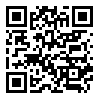BibTeX | RIS | EndNote | Medlars | ProCite | Reference Manager | RefWorks
Send citation to:
URL: http://hakim.tums.ac.ir/article-1-519-en.html
Kavosi Z1 (MS), Rashidian A1,2 (MD, PhD), Pourmalek F3 (MD, PhD), Majdzadeh R1,2 (DVM, PhD), Pourreza A * 1 (PhD), Mohammad K1 (PhD), Arab M1 (PhD)
1 School of Public Health, Tehran University of Medical Sciences, Tehran, Iran
2 Center for Knowledge Translation and Exchange, Tehran University of Medical Sciences, Tehran, Iran
3 University of Washington, Seattle, USA
Received 6 Jun 2009, Accepted 3 Aug 2009
Abstract
Introduction: Protecting the public from financial costs of healthcare and the equitable contribution to healthcare costs is one of the main goals of a health system. We aimed to quantify and compare the proportion of households facing catastrophic healthcare expenditure in years 2003 compared to 2008, and to identify the factors that contributed to these expenditures.�
Methods: In 2003, the World Health Survey questionnaire was used to collect data on a 2-stage cluster sample of 635 households. In 2008 data was collected from the same sample. Proportion of households facing catastrophic healthcare expenditure was estimated using the households’ capacity to pay. The determinants of household catastrophic healthcare expenditure were identified using chi-square test.�
Results: The proportion of households facing catastrophic healthcare reduced from 12.6% in 2003 to 11.8% in 2008 and the change was statistically non-significant. The key determinants of catastrophic healthcare expenditures for both years were healthcare utilization (especially inpatient and dentistry care). Household economic status, having member over 65y and having disabled member influenced exposure to catastrophic healthcare expenditure in 2008.
Conclusion: Our findings demonstrate that use of expensive inpatient care, use of essential dental care (not covered in insurance packages), having member over 65y, having disabled member, and lower economic status increase the households' exposure to catastrophic expenditures which should be considered in formulating policies and strategies of protecting households from economic impacts of illness. It seems that there has been no significant change in the proportion of such expenditures in recent years.
�
Keywords: Health Expenditures, Health Care Quality Access and Evaluation, Medical Indigency, Social Class
�
Hakim Research Journal 2009 12(2): 38- 47
�
* Corresponding Author: Department of Health Management and Economics, School of Public Health, Tehran University of Medical Sciences, Enghelab Ave, Tehran, Iran. Tel: +98- 21- 88989128, fax: +98- 21- 88989129, porrezaa@sina.tums.ac.ir
| Rights and permissions | |
 |
This work is licensed under a Creative Commons Attribution-NonCommercial 4.0 International License. |



